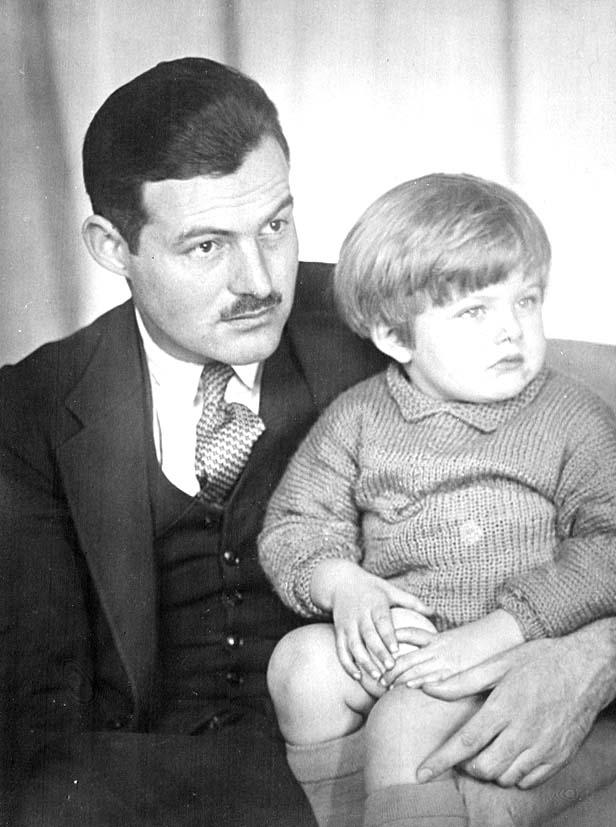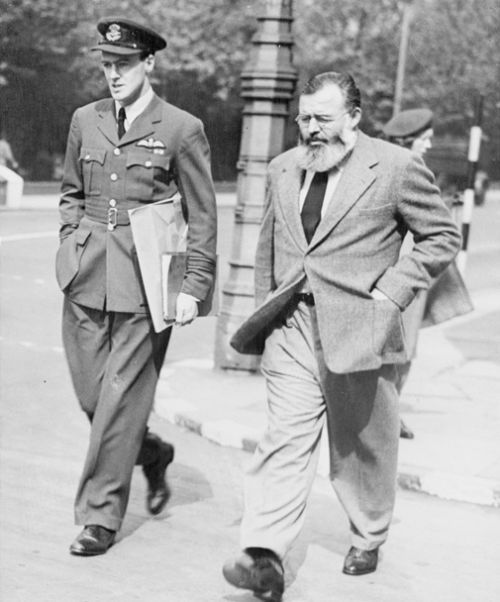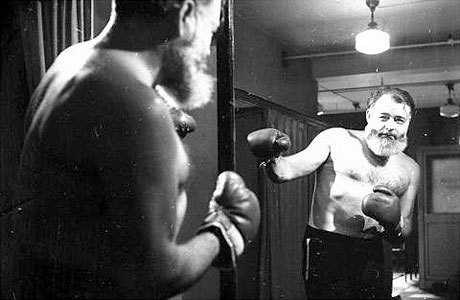Ernest Hemingway was born July 21st in
Oak Park, Illinois. His parents owned a cabin in Northern Michigan where he
learned to hunt, fish and appreciate the outdoors. This learned appreciation
for the outdoors would go on to influence his adventurous nature later in life.
In high school Hemingway began his prolific career by writing for the school
newspaper. After graduating he started writing for the Kansas City Star at the extremely young age of 17.
"On the Star you were forced to learn to write a simple declarative sentence. This is useful to anyone. Newspaper work will not harm a young writer and could help him if he gets out of it in time."-Hemingway
From an early age Hemingway was learning to write
directly, rather than in the expansive style of the time. This short, but
powerful, style of writing would go on to help him win the Nobel Prize.
Hemingway Goes to War...
In 1918 Hemingway left his job as a writer and went to serve in World War I. He served as an ambulance driver during the war, and actually earned the Italian Silver Medal of Bravery. However, he was wounded during the war, and spent a long time in recovery.
During his time in recovery, Hemingway proposed to a
nurse named Agnes von Kurowsky. She accepted, but she quickly turned around and
had an affair. A devastated Hemingway would later use this ammunition in his
book A Farewell to Arms.
OOOOOHHHHH
CAAANNNAAADDDDAAAA…
A young recovering Hemingway moved back to
Chicago where he met his first wife Hadley Richards. Hemmingway then took a job
with the Toronto Star. For which he
would work as a foreign correspondent and cover events like the Greek
Revolution.
Paris...
“If you are lucky enough to have lived in Paris as a young man, then wherever you go for the rest of your life it stays with you, for Paris is a moveable feast”-Hemingway
Hemingway and Hadley very quickly moved to Paris.
They joined Gertrude Stein’s “Lost Generation” where they interacted with the
key artists of the time, such as Fitzgerald and Picasso. During this time Hemingway
really began to develop his own unique style of writing. Hemingway’s
interactions with Fitzgerald were particularly interesting, and will be covered
later.
It's a Boy...
In 1923 the couple had a child named John Hadley
Nicanor Hemingway
The Birth of a Novel...
In 1925 Hemingway and his wife joined a group of expatriates
to go to the Festival of San Fernin in Spain. This trip was Hemingway’s
inspiration for his most widely renowned book The Sun Also Rises.
However, after the book was published Hemingway
divorced his wife over an affair he was having. His mistress, Pauline Pfeiffer,
instantly became his next wife.
Key West...
Predictably, Hemingway’s new wife became pregnant.
So in 1928 they moved to Key West, Florida. It was during this wild time that
Hemming way published his critically acclaimed novel A Farewell to Arms.
Earning the Mustache...
During the 1930’s Hemmingway wrote, as well as
participated in the most mind boggling activities.
Big game hunting...
Bull fighting...
Deep sea fishing...
Borderline alcoholism...
"Write drunk, edit sober" -Hemingway
Ummmm…Third
Time’s the Charm?
In 1937 Hemmingway was covering the Spanish Civil
War when he became infatuated with a female correspondent named Gellhorn.
Needless to say, he soon divorced Pauline and married Gellhorn. During his time
in Spain collected enough to write his next novel For Whom the Bell Tolls. This novel went on to become Hemingway’s
first work to be nominated for a Pulitzer Prize.
Cuba…
After remarrying, Hemingway purchased a farm near
Havana, Cuba where he would spend his winters.
World War II
When World War II broke out, Hemmingway once again became a correspondent. Hemingway was present at many crucial moments of the war, including the legendary D-Day landing in France.
Marriages
of the Fourth Kind…
During his time covering WWII Hemmingway developed
an interest in a fellow correspondent named Mary Welsh. Soon after the war
ended, Hemingway divorced his third wife and married Welsh.
In 1951 Hemingway published his Pulitzer Prize
winning book The Old Man and the Sea.
Shortly after, in 1954 he won the Nobel Prize for literature
The Long Fall…
During this time of great success in Hemingway’s career,
his body and mind began to fail him. After sustaining countless injuries during
his lifetime, including surviving multiple plane crashes during his African
safaris, Hemingway was finally paying the piper. Hemingway moved to Idaho where
he spent the next decade in a tragic downward spiral.
Before
the Dawn…
July 2nd 1961, Hemingway pushed to
shells into the barrels of his favorite shotgun, put the barrel in his mouth
and pulled the trigger. Hemingway’s steady decline had come to a disastrous and
undeserving end.
Such
Style…
Hemingway’s style of writing was very different from
his peers of the time. Most writers of the time, such as Fitzgerald, wrote in
long elegant sentences. Hemmingway
believed that writing in shorter, more powerful, sentences his writing was more
pure and superior. This style was created through his years as a reporter and
war correspondent. This short, but powerful, style of writing arguably mirrors
Hemingway’s lifestyle.
“ I never had any respect for him ever, except for his lovely, golden wasted talent”-Hemingway on Fitzgerald
Hemingway was an extremely competitive writer. He
would frequently compare the completion amongst writers to boxing. He would
then also call himself “the champ”. Hemingway’s direct writing style was
extremely different from Fitzgerald’s long and eloquent wordiness. Hemingway
was very oppressive toward threatening writers, and Fitzgerald frequently fell
victim to Hemingway’s competitive thrusts. I believe that the character Tom in The Great Gatsby is actually a fictional
representation of Hemmingway.
Work Cited
Gent, George. "Hemingway's Letters Tell of Fitzgerald." New York Times. N.p., n.d. Web. 21 Feb. 2013.
"Ernest Hemmingway." 2013. The Biography Channel website. Feb 21 2013,
Martin, Christopher D. "Ernest Hemingway: A Psychological Autopsy Of A Suicide." Psychiatry: Interpersonal & Biological Processes 69.4 (2006): 351-361. Academic Search Complete. Web. 21 Feb. 2013.
















interesting
ReplyDelete